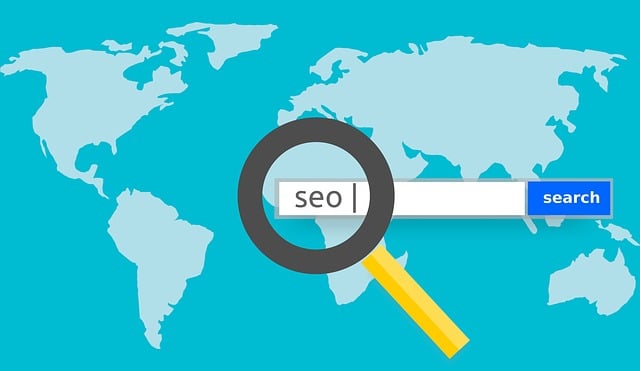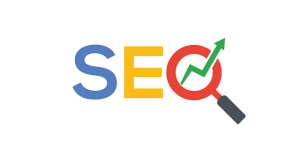Content creators can dramatically enhance online success through mastering SEO (Search Engine Optimization). This involves keyword research using tools like Google Keyword Planner for audience-tailored content integration, on-page optimization with compelling titles and headings, and high-quality, unique material. Effective strategies include optimizing meta descriptions, leveraging headers, mixing media elements, regular updates, guest blogging, and creating valuable assets. Backlink building through collaborations and social media sharing increases site authority. Regular SEO performance analysis using tools like Google Analytics and SEMrush informs data-driven decisions for continuous optimization in a competitive digital environment.
“In the digital age, content creators must master SEO growth strategies to thrive. This comprehensive guide equips you with essential tools for maximizing online visibility. From understanding the fundamentals of SEO for content creators to delving into keyword research and on-page optimization techniques, we explore actionable steps. Learn how to craft engaging content that captivates audiences and aligns with search engine preferences. Additionally, discover effective strategies for building quality backlinks and measuring SEO performance.”
Understanding SEO for Content Creators: The Basics

For content creators, understanding SEO (Search Engine Optimization) is crucial for achieving online visibility and attracting their target audience. At its core, SEO involves optimizing digital content to rank higher on search engine results pages (SERPs). This process includes a range of strategies designed to increase organic traffic to websites or platforms where content is published. By implementing effective SEO growth strategies, creators can ensure their work reaches the right viewers, driving engagement and building a dedicated following.
SEO for creators begins with keyword research, identifying terms and phrases that potential fans might use to search for content similar to theirs. Incorporating these keywords naturally into titles, headings, meta descriptions, and body text enhances the likelihood of appearing in relevant searches. Additionally, creating high-quality, unique content that provides value to readers is paramount. Search engines favor informative and engaging content, so writers should aim to offer insights, share expert opinions, or present creative ideas that resonate with their niche audience.
Keyword Research: Unlocking the Power of Relevant Terms

Keyword research is a cornerstone of any successful SEO growth strategy for content creators. It involves identifying and understanding the terms and phrases that potential audiences use when searching for information related to your niche. By unlocking the power of relevant keywords, creators can ensure their content resonates with the right viewers, driving organic traffic and boosting engagement.
Using tools like Google Keyword Planner, SEMrush, or Ahrefs, creators can discover popular search terms, analyze competition, and uncover long-tail keywords that offer better targeting opportunities. Incorporating these keywords naturally into titles, headings, meta descriptions, and body text not only improves search engine rankings but also enhances the user experience. This strategic approach ensures that content is optimized for both search engines and human readers, paving the way for increased visibility and higher conversion rates.
Optimizing On-Page Elements: Title Tags, Meta Descriptions, and Headings

Content creators looking to boost their SEO growth strategies should start by optimizing on-page elements. Title tags, for instance, act as a gateway to your page, capturing both user and search engine attention. Crafting compelling and keyword-rich titles that accurately represent your content is key.
Meta descriptions, another vital component, provide a concise snapshot of what visitors can expect. They influence click-through rates and should be structured to entice users while incorporating relevant keywords seamlessly. Headings, too, are essential for both readability and search engine indexing. Utilizing H1 for main headings and H2, H3, etc., for subheadings organizes your content logically and aids in conveying its structure to search engines.
Creating High-Quality, Engaging Content That Search Engines Love

Creating high-quality, engaging content is a cornerstone of any successful SEO growth strategy for content creators. Search engines, led by Google, are increasingly sophisticated in their ability to understand and rank content based on relevance, quality, and user engagement. To capture their attention, focus on producing well-researched, informative, and uniquely valuable pieces that cater to your target audience’s interests and needs. Incorporate a mix of text, images, videos, and interactive elements to enhance the user experience and encourage longer dwell times on your pages.
Optimizing content for SEO involves more than just keyword stuffing. It requires a deep understanding of your audience’s search intent—whether they’re looking for information, solutions, or entertainment. Integrate relevant keywords naturally throughout your content, ensuring optimal title tags, meta descriptions, and header structures. Regularly update your content to keep it fresh and accurate, as search engines favor dynamic, up-to-date sources. Additionally, promoting your content through social media and building backlinks from reputable sites can significantly boost its visibility and credibility in search engine results.
Building Quality Backlinks: Strategies for Influencers and Creators

Building quality backlinks is a cornerstone of successful SEO growth strategies for influencers and creators. Unlike traditional businesses, these individuals often lack established brand authority, making it crucial to leverage alternative methods. One effective approach is guest blogging on popular industry sites or creating in-depth content that naturally attracts links from other relevant platforms. Engaging with influencers in their niche and collaborating on cross-promotional campaigns can also yield valuable backlinks.
Additionally, utilizing social media platforms to share unique content, such as infographics or research-backed articles, can draw attention and encourage natural linking. Optimizing these linked assets with keyword-rich anchor text further enhances SEO benefits. Remember, the goal is to earn links from reputable sources that align with your content’s quality and relevance, thereby boosting both your site’s authority and search rankings.
Measuring and Analyzing SEO Performance: Tools and Key Metrics

Measuring and analyzing SEO performance is an integral part of any content creator’s strategy. It allows them to understand what’s working, identify areas for improvement, and ultimately, refine their SEO growth strategies. A variety of tools are available to assist in this process, each offering unique insights into different aspects of search engine optimization. Google Analytics stands out as a staple tool, providing data on organic traffic, keyword rankings, and user behavior. These metrics help content creators understand how well their content is resonating with the audience and where they might be losing potential viewers.
For more in-depth analysis, tools like SEMrush or Ahrefs offer comprehensive SEO reports. They track backlink profiles, keyword difficulties, and competitor strategies, enabling creators to benchmark their performance against peers. By regularly monitoring these key metrics, content creators can make data-driven decisions that push their SEO growth strategies in the right direction, ensuring they stay relevant and visible in the competitive digital landscape.
